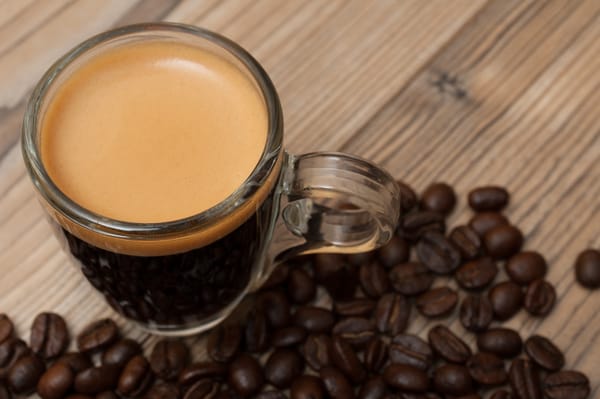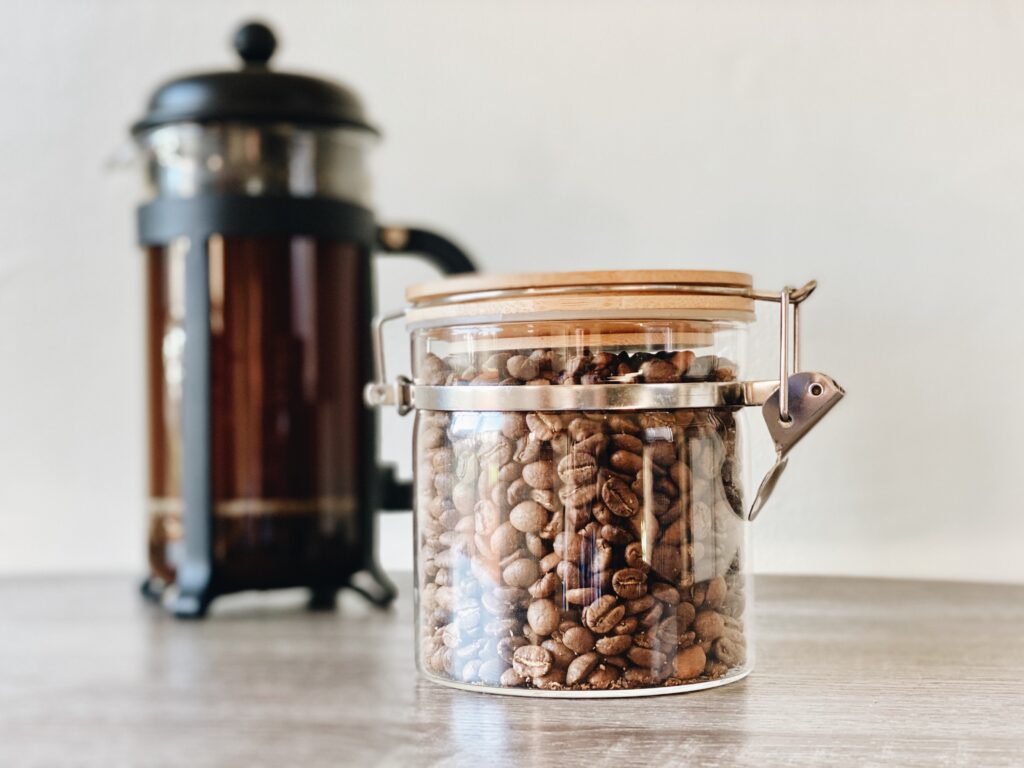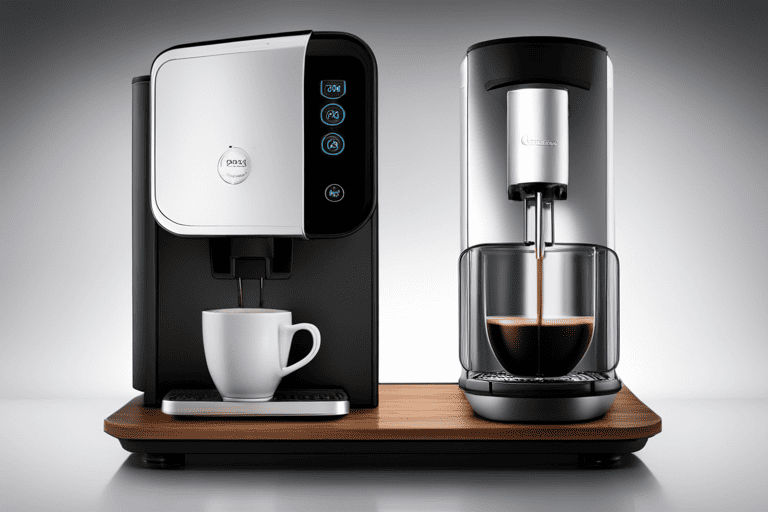How Long Does Espresso Last? A Comprehensive Guide to Espresso Shelf Life

If you’re a coffee lover, you know that espresso is one of the most popular coffee drinks out there. But have you ever wondered how long an espresso shot can last? Well, we’ve got some answers for you.
First things first, let’s talk about what espresso is. Espresso is a concentrated coffee drink that is made by forcing hot water through finely ground coffee beans. This process creates a thick, creamy foam called crema that sits on top of the espresso shot. Espresso is the base for many popular coffee drinks, such as lattes and cappuccinos, and is also used in cocktails, like espresso martinis.
So, how long does an espresso shot last? The answer depends on a few factors, including the storage method and the age of the espresso. Freshly brewed espresso is good for 20-30 minutes at room temperature, and usually around 24-72 hours when stored in the fridge. However, the flavor and quality of the espresso shot will start to degrade over time, so it’s best to consume it as soon as possible.
What is Espresso?
Espresso is a type of coffee that is made by forcing hot water through finely ground coffee beans. The result is a concentrated shot of coffee that is thick and full-bodied. Espresso originated in Italy in the early 20th century and has since become a popular coffee beverage around the world.
What Makes Espresso Unique?
Espresso is unique because it is made using a special brewing method that produces a concentrated shot of coffee. The brewing process involves forcing hot water through finely ground coffee beans at high pressure. This results in a shot of coffee that is thicker and more concentrated than regular coffee.
One of the defining features of espresso is the layer of crema that forms on top of the shot. Crema is a light-colored foam that is created by the emulsification of oils in the coffee beans. It adds a creamy texture and a slightly sweet taste to the espresso shot.
The Espresso Shot
The espresso shot is the heart of any espresso-based drink. It is made by using an espresso machine to force hot water through a compacted puck of finely ground coffee beans. The shot is typically served in a small cup and can be enjoyed on its own or used as the base for other espresso-based drinks like lattes and cappuccinos.
The standard size for an espresso shot is around 1 ounce, although some coffee shops may serve slightly larger or smaller shots. The shot should be consumed quickly after it is pulled to ensure that it retains its flavor and texture.
Espresso shots are known for their high caffeine content. The exact amount of caffeine in an espresso shot can vary depending on the type of beans used and the brewing process, but it is generally higher than that of a regular cup of coffee.

How Long Does Espresso Last?
Espresso is a popular coffee beverage enjoyed by many around the world. However, once brewed, it can be challenging to determine how long it will last. In this section, we will explore the factors that affect espresso shelf life and how to properly store it to prolong its freshness.
Factors That Affect Espresso Shelf Life
Several factors can affect the shelf life of espresso, including:
- Age
- Potency
- Body weight
- Personal reaction to caffeine
- Storage method
Espresso shots are best enjoyed fresh, but they can still be consumed after they have cooled down. Once consumed, the effects of caffeine will occur and can last between 5 to 7 hours. The taste and flavor of espresso shots will change significantly after 10 to 15 minutes of brewing, but that does not mean they are expired.
It is essential to note that old espresso can lead to a less fresh taste and flavor. Therefore, it is crucial to store espresso properly to maintain its freshness.
Storing Espresso
The best way to store espresso is to keep it in an airtight container away from heat, light, and moisture. When espresso is exposed to air, it can lead to oxidation, which can affect its taste and flavor. An airtight container will help seal in the freshness and prolong its shelf life.
It is also essential to store coffee beans or leftover coffee grounds in an airtight container at room temperature to maintain their freshness. Whole beans will last longer, usually up to 4 or 6 months. Pre-ground espresso expires after around a month if you do not seal it properly.
Refrigeration or freezing can also help preserve the flavor of your espresso for longer periods of time. However, it is crucial to note that storing espresso in a freezer can lead to moisture buildup, which can affect its taste and flavor. Therefore, it is best to store espresso in an airtight container at room temperature.
When using espresso machines, it is best to use freshly brewed espresso. The surface area of the espresso shot can affect its taste and flavor, and therefore, it is essential to use freshly brewed espresso for the best taste and flavor.
In conclusion, the shelf life of espresso can vary depending on several factors. To maintain its freshness, it is best to store espresso in an airtight container away from heat, light, and moisture. Proper storage can prolong the shelf life of espresso and maintain its taste and flavor.

Storing Espresso in the Fridge
Espresso is a delicate drink that needs to be handled with care to maintain its quality and flavor. One of the ways to extend the shelf life of espresso is by storing it in the fridge. In this section, we will discuss whether you can store espresso in the fridge and how to do it correctly.
Can You Store Espresso in the Fridge?
Yes, you can store espresso in the fridge, but it’s not recommended to do so for an extended period. According to Coffeepursuits, storing brewed espresso in the fridge can extend its shelf life for up to 15-20 days. However, it’s crucial to keep it in an airtight container and consume it within a day or two for the best taste and quality.
It’s important to note that storing espresso in the fridge can affect its taste and quality. According to Fresh Coffee House, a hot, smooth, and creamy espresso will become a bitter, chalky, hard-to-swallow mess if stored in the fridge for too long. Therefore, it’s best to consume the espresso as soon as possible after brewing it.
How to Store Espresso in the Fridge
If you need to store espresso in the fridge, here are some steps to follow:
- Brew your espresso and let it cool down to room temperature.
- Transfer the espresso into an airtight container. Make sure the container is clean and dry.
- Place the container in the fridge. Make sure it’s not placed near any strong-smelling foods, as espresso can easily absorb odors.
- Consume the espresso within a day or two for the best taste and quality.
It’s also important to note that once you take out the espresso from the fridge, you should not reheat it. Reheating espresso can cause it to lose its flavor and quality. Instead, you can let it come to room temperature and consume it as a cold drink or use it to make iced coffee.
In conclusion, storing espresso in the fridge can extend its shelf life, but it’s not recommended to do so for an extended period. If you need to store espresso in the fridge, make sure to follow the steps mentioned above to maintain its quality and flavor.
Reheating Espresso
Can You Reheat Espresso?
Espresso is best enjoyed fresh. The peak flavor of an espresso shot lasts only 10 to 20 seconds, with the crema lasting for 2 to 4 minutes typically. However, if you have leftover espresso that you want to reheat, it is possible to do so. Reheating espresso is not recommended as it can affect the taste and quality of the coffee. When espresso is reheated, the oils that give it its distinct flavor and aroma can start to break down and become rancid. This can result in a bitter or sour taste. Additionally, reheating espresso can change its pH level, leading to an undesirable taste.
How to Reheat Espresso
If you must reheat your espresso, there are a few methods you can try. Keep in mind that none of these methods will result in the same quality as a freshly brewed espresso shot. One method is to microwave the espresso for a few seconds. However, this method can be tricky as the espresso can easily become overheated and lose its flavor. We recommend microwaving the espresso in short intervals and checking the temperature frequently. Another method is to heat the espresso on the stove. Place the espresso in a small pan and heat it over low heat, stirring constantly. Be careful not to overheat the espresso as this can cause it to become bitter. It’s important to note that reheating espresso is not recommended as it can affect the taste and quality of the coffee. If you have leftover espresso, it’s best to use it within 24 hours of making it for the best taste. Don’t reheat the espresso if you can avoid it.
Making Other Espresso Drinks
Making a Latte with Espresso
If you’re a fan of lattes, you’ll be happy to know that they’re easy to make with espresso. Start by brewing a shot or two of espresso, then heat up some milk in a separate container. Once the milk is hot, use a frother or whisk to create foam on top. Pour the milk into the espresso shot and spoon the foam on top. You can add sugar or flavors like vanilla or caramel syrup to taste.
Making an Iced Latte with Espresso
If you prefer your latte cold, you can make an iced latte with espresso. Brew a shot or two of espresso and let it cool to room temperature. Fill a glass with ice and pour the espresso over it. Add cold milk and stir. You can also add flavors like chocolate syrup or whipped cream for a decadent treat.
Making an Espresso Martini
If you’re in the mood for a cocktail, an espresso martini is a delicious option. Brew a shot of espresso and let it cool. In a shaker, mix the espresso with vodka, Kahlua, and ice. Shake well and strain into a martini glass. You can also add sugar or simple syrup if you prefer a sweeter drink. Overall, espresso is a versatile ingredient that can be used in a variety of drinks. Whether you prefer hot or cold, sweet or strong, there’s an espresso drink for everyone.
Conclusion
After conducting thorough research on the topic, we have learned that espresso can go bad if not stored properly and should be consumed within three days of purchase. It is important to remember that espresso should never be reheated or frozen and that it contains a high amount of caffeine.
The lifespan of espresso can be extended by storing it in an airtight container in the refrigerator. Brewed espresso can last up to 24 hours when stored in the refrigerator. It is essential to keep the espresso in an airtight container to prevent oxidation and to maintain its flavor and aroma.
The oxidation process is what causes espresso to go stale. When exposed to air, the oils in the coffee beans begin to oxidize, which can lead to a loss of flavor and aroma. This process can be slowed down by storing the espresso in an airtight container in a cool, dark place away from direct sunlight.
It is important to note that the flavor and aroma of espresso can vary depending on the type of beans used and the method of preparation. However, by following proper storage techniques, we can ensure that our espresso stays fresh and tasty for as long as possible.
Overall, it is best to consume espresso as soon as possible after it has been brewed to enjoy its full flavor and aroma. However, by storing it properly, we can extend its lifespan and continue to enjoy a delicious cup of espresso for a few days after it has been brewed.





